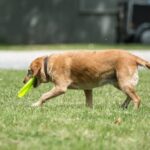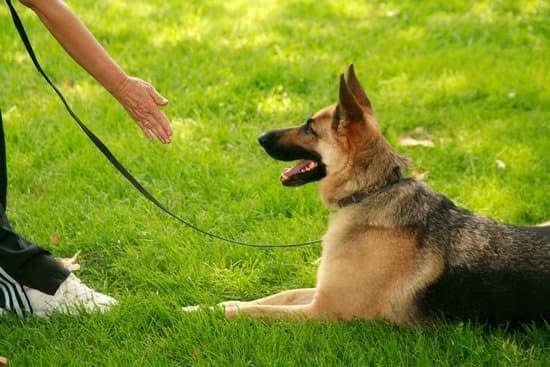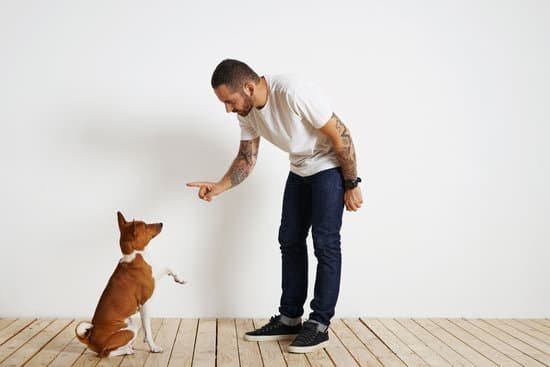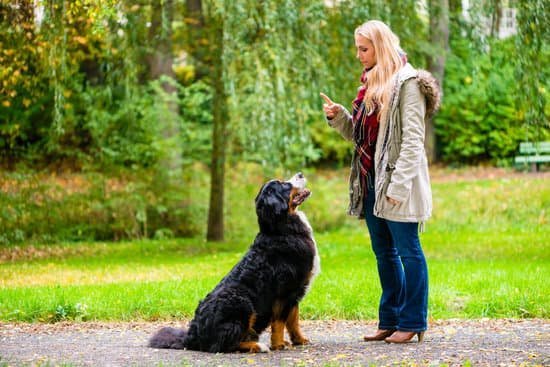How to train your dog to stop attacking is a crucial aspect of responsible pet ownership. It can be stressful and challenging to deal with aggressive behavior in dogs, but understanding the reasons behind it is the first step towards finding a solution. In this article, we will explore the various techniques and strategies that can help you effectively train your dog to stop attacking.
Dogs may exhibit aggressive behavior for a variety of reasons, including fear, protectiveness, frustration, or even illness. Understanding these underlying causes is essential in addressing the root of the problem rather than just treating the symptoms. By delving into why dogs attack, pet owners can develop a comprehensive approach to training that takes into account their furry friend’s specific needs and triggers.
Identifying triggers for your dog’s aggressive behavior is also crucial in developing an effective training plan. Some common triggers include territoriality, resource guarding, or fear of certain people or situations. Recognizing and understanding these triggers will allow you to tailor your training techniques to address them directly and minimize the likelihood of future attacks.
Identifying Triggers
One of the essential steps in training your dog to stop attacking is identifying the triggers that set off their aggressive behavior. These triggers can vary widely from one dog to another, and it is crucial to understand what specific situations or stimuli prompt your dog to react aggressively. Common triggers include fear, territoriality, protective instincts, frustration, and pain or discomfort.
Understanding your dog’s body language and behavior cues is vital in identifying these triggers. For example, if your dog becomes tense, starts growling or baring its teeth when approached by strangers, it may indicate fear or territorial aggression. By recognizing these signs and patterns of behavior, you can begin implementing strategies to address and manage the triggers effectively.
Some tools for identifying triggers could be keeping a log of the circumstances surrounding aggressive incidents such as time of day, location, presence of specific people or animals, and any other relevant factors. Additionally, consulting with a professional dog trainer or behaviorist can provide valuable insight into recognizing and addressing the root causes of aggression in dogs.
| Common Triggers | Behavioral Cues |
|---|---|
| Fear | Tensing up, growling |
| Territoriality | Baring teeth, defensive stance |
| Protective Instincts | Showing possessiveness over toys/food |
Positive Reinforcement Training
Positive reinforcement training is a proven method to discourage attacking behavior in dogs. This technique involves rewarding your dog for good behavior, which can help to diminish aggressive tendencies. By providing treats, praise, or toys when your dog displays non-aggressive behavior, you can reinforce positive habits and discourage attacking.
When implementing positive reinforcement training, it’s essential to use high-value rewards to effectively discourage attacking behavior in dogs. High-value rewards could include their favorite treats or toys, as this will encourage them to associate good behavior with a positive outcome. Additionally, consistency is key to successfully utilizing positive reinforcement training. Ensure that you reward your dog every time they display non-aggressive behavior, and be patient as this process may take time.
It’s important to note that positive reinforcement training should not involve any form of punishment or harsh discipline. Instead, focus on rewarding the desired behaviors and ignoring or redirecting unwanted actions. By doing so, you can create a positive and trusting relationship with your dog while addressing their attacking behavior. Remember to remain consistent and patient throughout the training process for effective results.
| Positive Reinforcement Training Techniques | Description |
|---|---|
| Use of high-value rewards | Provide treats or toys that your dog loves as a reward for good behavior. |
| Consistency | Reward your dog every time they display non-aggressive behavior and remain patient throughout the process. |
| Avoid punishment | Avoid using punishment or harsh discipline during positive reinforcement training. |
Establishing Leadership
As a pet owner, it is crucial to establish yourself as the leader of the pack in your dog’s eyes. Dogs are pack animals, and they look to their owners for guidance and leadership. By asserting yourself as the pack leader, you can help reduce your dog’s aggressive behavior and create a harmonious relationship with your furry friend.
To establish yourself as the pack leader, consider implementing the following techniques:
- Set clear boundaries: Dogs thrive on structure and routine. Establishing clear boundaries and rules will help your dog understand what behavior is acceptable and what is not.
- Use confident body language: Dogs are highly attuned to body language, so it’s important to project confidence and assertiveness when interacting with your pet. Stand tall, make direct eye contact, and use a calm but firm tone of voice.
- Be consistent: Consistency is key when establishing yourself as the pack leader. Consistently enforce rules and commands, and be sure to follow through with consequences for unwanted behavior.
By implementing these techniques, you can effectively establish yourself as the pack leader in your dog’s eyes, which can help reduce their aggressive tendencies.
Remember that every dog is unique, so it may take time for your pet to fully recognize you as the pack leader. Be patient and consistent in your efforts, and seek professional help if needed to ensure the safety of both you and your furry companion.
Socialization and Exposure Therapy
- Socialization: Introducing your dog to new people and animals in a controlled environment is essential to help them become more comfortable and less aggressive. It’s important to start the socialization process early on in your dog’s life, ideally during puppyhood. By exposing your dog to different experiences, you can help prevent aggression from developing.
- Desensitization: If your dog displays aggression towards specific triggers, such as other dogs or loud noises, desensitization can be an effective technique. This involves gradually exposing your dog to the trigger in a controlled and positive way, helping them learn that there’s no need for aggression.
- Professional help: In some cases, a professional dog trainer or behaviorist may be necessary to assist with socialization and exposure therapy. They can provide guidance on how to safely introduce your dog to new experiences and offer support throughout the training process.
- Consistency: Consistency is key when it comes to socialization and exposure therapy. It’s important to continue working with your dog regularly and remain patient throughout the process. With time and dedication, you can help your dog learn to interact with others without displaying aggressive behavior.
Redirecting Attention
Redirecting your dog’s attention away from attacking behavior is an important aspect of training them to stop aggressive behavior. It involves teaching your dog to focus on something else whenever they are feeling anxious, threatened, or aggressive. There are several techniques that can help you redirect your dog’s attention and prevent them from attacking.
Positive Reinforcement: Using Treats and Toys
One effective technique for redirecting your dog’s attention is using positive reinforcement. This involves rewarding your dog with treats or toys when they display the desired behavior of not attacking. Whenever you notice a trigger that may cause your dog to become aggressive, redirect their focus onto a toy or treat. This will help them associate the trigger with positive experiences rather than aggression.
Behavioral Training: Teaching Basic Commands
Another way to redirect your dog’s attention is by training them to respond to basic commands such as “sit,” “stay,” or “leave it.” By teaching your dog these commands, you can use them as a distraction when they are displaying signs of aggression. For example, if you notice that your dog is becoming agitated when seeing another dog, you can use the “sit” command to divert their attention and prevent an attack.
Physical Activity: Exercise and Playtime
Engaging in physical activities such as exercise and playtime can also help redirect your dog’s focus away from attacking behavior. A tired and mentally stimulated dog is less likely to display aggression. Take your dog for regular walks, engage in interactive play sessions, or participate in obedience training classes. These activities can help reduce their overall stress levels and redirect their focus onto more positive behaviors.
By implementing these redirection techniques, you can effectively train your dog to stop attacking and instead focus on more positive behaviors. Consistency and patience are key when using these techniques, so make sure to practice them regularly and seek professional help if needed. With dedication and the right approach, you can successfully redirect your dog’s attention away from attacks.
Professional Help
When dealing with a dog’s aggressive behavior, it is essential to recognize when you might need the assistance of a professional dog trainer. Here are some instances when seeking professional help is crucial:
- If your dog’s aggression is becoming increasingly severe and difficult to manage on your own.
- When you have tried different training techniques without success, and the aggressive behavior persists.
- If you feel unsafe or unable to handle your dog’s aggressive outbursts.
Professional dog trainers have the expertise and experience in dealing with various types of aggressive behavior in dogs. They can assess your dog’s specific triggers, develop a personalized training plan, and provide guidance on how to effectively address the issue.
Seeking professional help is not a sign of failure as a pet owner but rather a responsible step towards ensuring the safety and well-being of both your dog and those around you. A professional dog trainer can provide invaluable support and contribute to creating a harmonious relationship between you and your beloved pet.
Remember that consistency and patience are key in addressing your dog’s aggressive behavior. Working collaboratively with a professional will increase the likelihood of successful outcomes for training your dog to stop attacking. By being proactive in seeking help when needed, you are taking an important step toward fostering a safe environment for everyone involved.
Lastly, always prioritize safety when dealing with aggressive behavior in dogs, and do not hesitate to reach out for professional assistance if necessary.
Consistency and Patience
In conclusion, training a dog to stop attacking can be a challenging but ultimately rewarding process. It’s important to understand the reasons behind your dog’s aggressive behavior and identify the triggers that set it off. Positive reinforcement training, such as using rewards to discourage attacking behavior, is an effective method for reshaping your dog’s behavior.
Establishing yourself as the pack leader is crucial in gaining your dog’s respect and obedience. Socialization and exposure therapy can also help your dog interact with others without aggression, while redirecting attention techniques can be used to shift your dog’s focus away from attacking.
When all else fails, seeking the assistance of a professional dog trainer may be necessary. However, the key to success in training your dog to stop attacking ultimately lies in consistency and patience. With dedication and perseverance, you can help your dog overcome its aggressive tendencies and become a well-behaved member of your family.
Frequently Asked Questions
Can Dogs Be Trained to Not Attack?
Yes, dogs can be trained to not attack. Through positive reinforcement training and consistent behavior management, aggressive behaviors in dogs can be modified. Training and socialization can help change a dog’s behavior and teach them alternative responses to certain triggers.
How Can I Get My Dog to Stop Being Aggressive?
To get your dog to stop being aggressive, it’s essential to identify the underlying causes of their aggression. Seek professional help from a certified dog trainer or animal behaviorist who can assess your dog’s behavior and provide guidance on how to modify their aggressive tendencies.
It’s important to use positive reinforcement techniques and avoid punishment-based methods, as these may exacerbate the problem.
Can Aggression Be Trained Out of a Dog?
Aggression in dogs can be trained out through proper training, socialization, and behavior modification techniques. By working with a qualified professional, you can address the root causes of your dog’s aggression and implement a training plan tailored to their specific needs. Consistent training, positive reinforcement, and management strategies can help modify aggressive behaviors in dogs over time.

Welcome to the blog! I am a professional dog trainer and have been working with dogs for many years. In this blog, I will be discussing various topics related to dog training, including tips, tricks, and advice. I hope you find this information helpful and informative. Thanks for reading!





